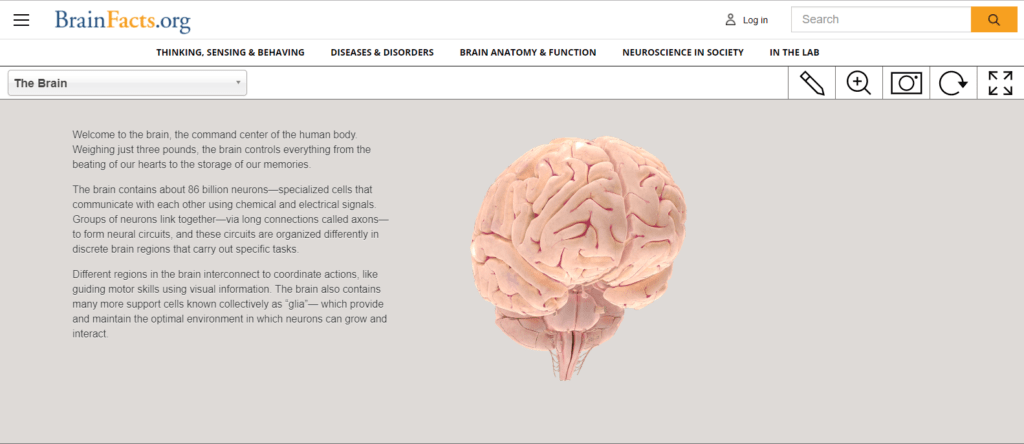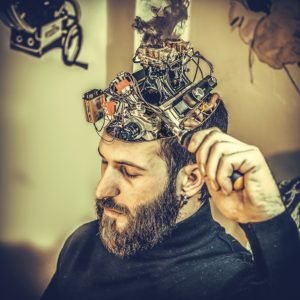THE TECHNO BRAIN
A 3D INTERACTIVE HUMAN BRAIN

In movies and documentaries exploring the body and riding inside the veins and seeing the complicated structures of the nervous system is an awesome experience. Thanks to a new virtual model, you can journey through a three-dimensional brain. The website BrainFacts.org, sponsored by The Society for Neuroscience and other organizations has recently launched an interactive 3-D brain, which has basic information about how the human brain functions. A translucent, light pink brain initially rotates on the screen. With a click of a mouse or a tap of a finger on a mobile device, you can highlight and isolate different parts of the organ. A brief text box then pops up to provide a structure’s name and details about the structure’s function.
For example, Primary Visual Cortex: It is the first part of the occipital lobe to receive visual information. Each neuron in the primary visual cortex receives information from both eyes working together to cover a specific portion of the visual field. Each side of the primary visual cortex processes information from…It also tells how a structure got its name or how researchers knew what it’s functions.

Clicking and dragging your mouse or finger allows you to rotate the brain. You can zoom in to view areas in detail or back out to get a bigger picture of a region’s connection to the rest of the brain.

A drop-down menu provides easy navigation to particular structures and gives more context for the brain’s anatomy. At a glance, the menu outlines, for instance, that the limbic system contains the entorhinal cortex, amygdala, and hippocampus.

And the hippocampus is further composed of the subiculum and dentate gyrus. Long, sometimes tongue-twisting names — such as the glossopharyngeal nerve — can be daunting. But the text boxes are easy primers, most no more than 50 to 100 words. Make it through the names and you’ll learn interesting nuggets, like that the glossopharyngeal nerve oversees swallowing muscles and relays information about taste and touch in the mouth. Anyone interested or fascinated by the anatomy of the brain should visit through this interactive model a fun and informative journey.
written by: Prashant Kumar Sinha


